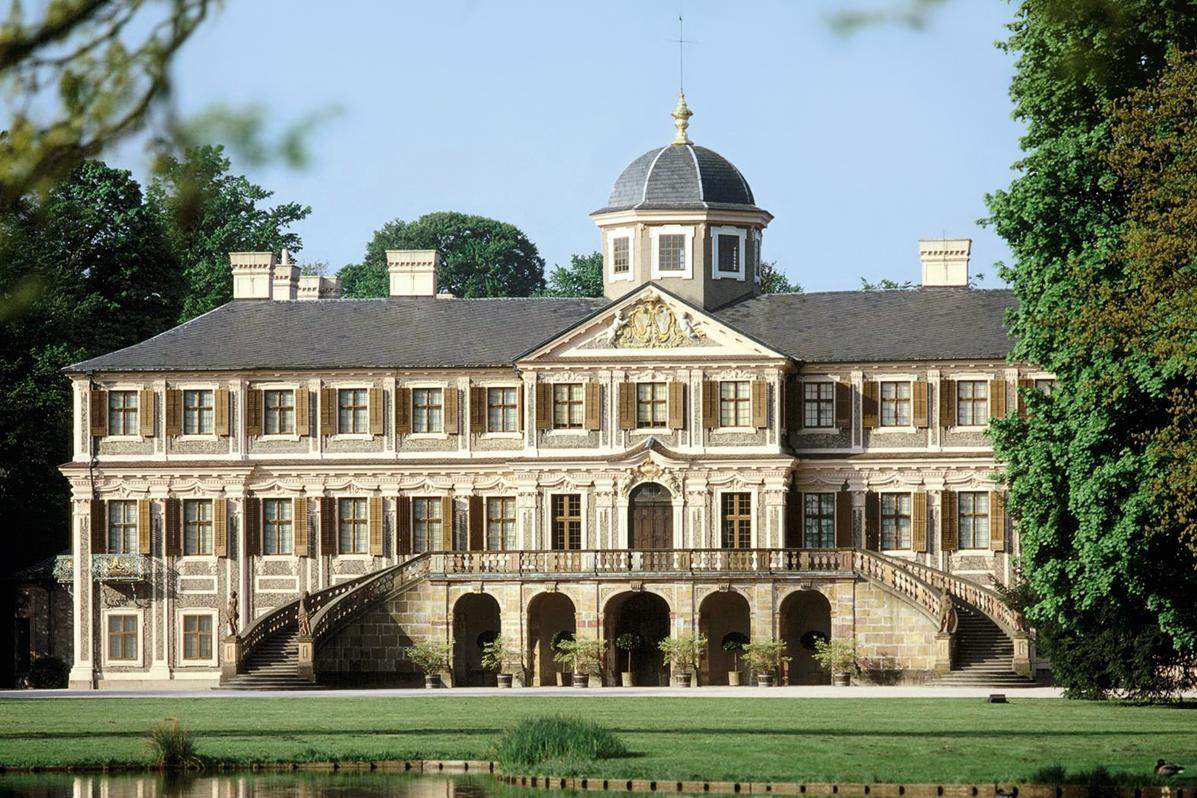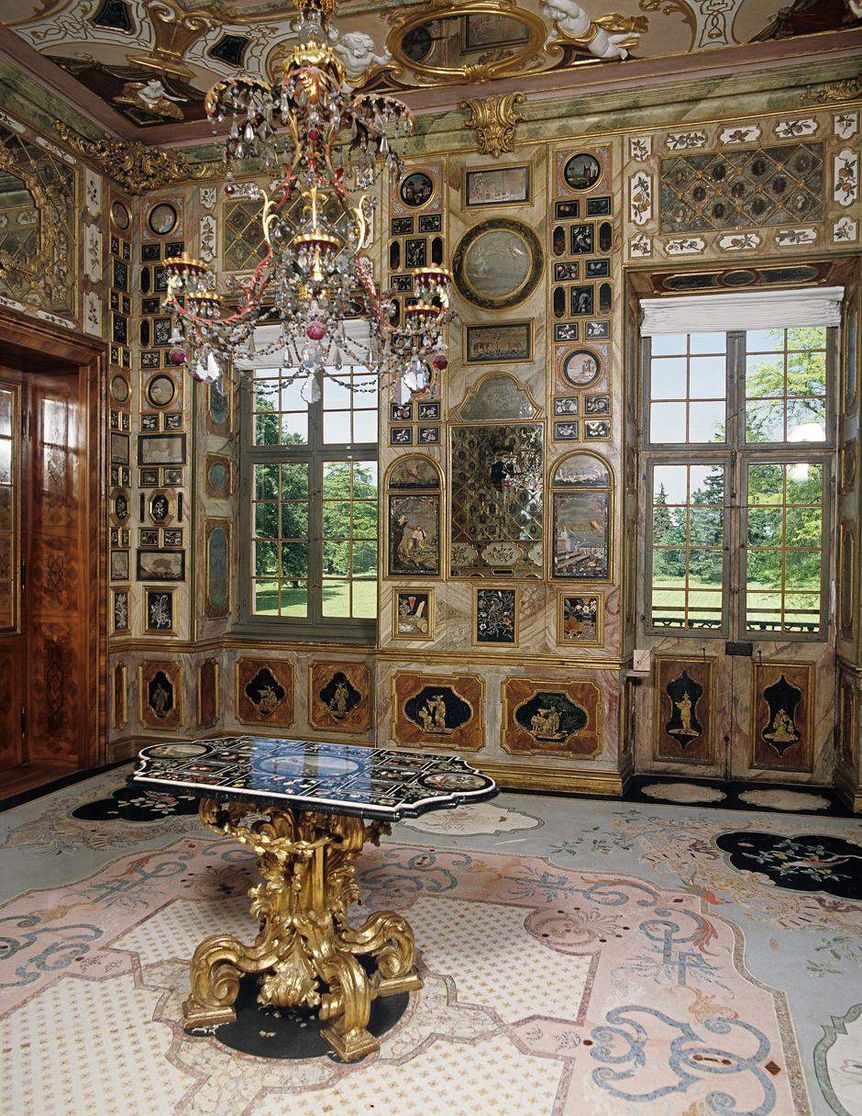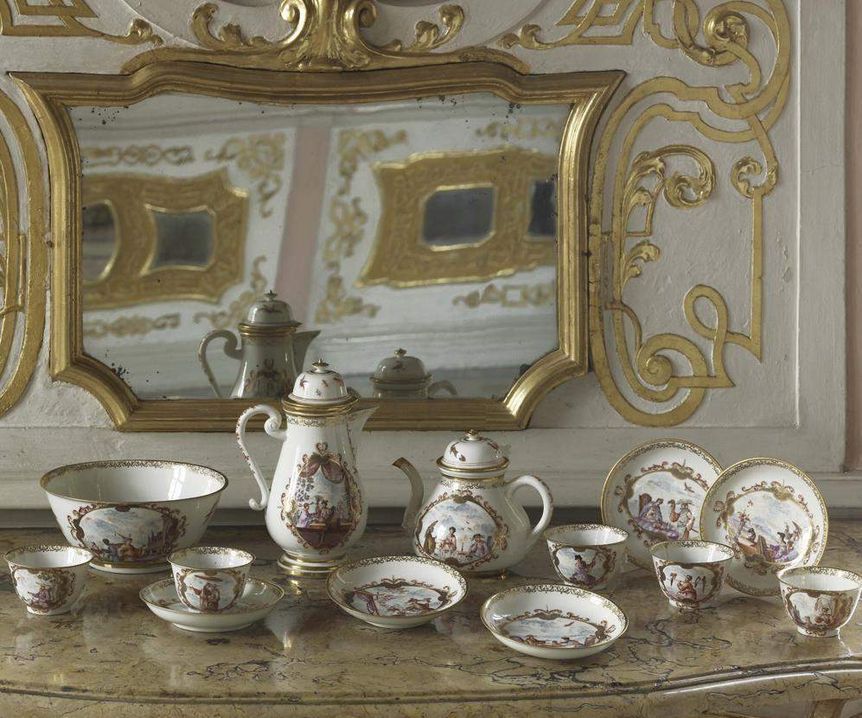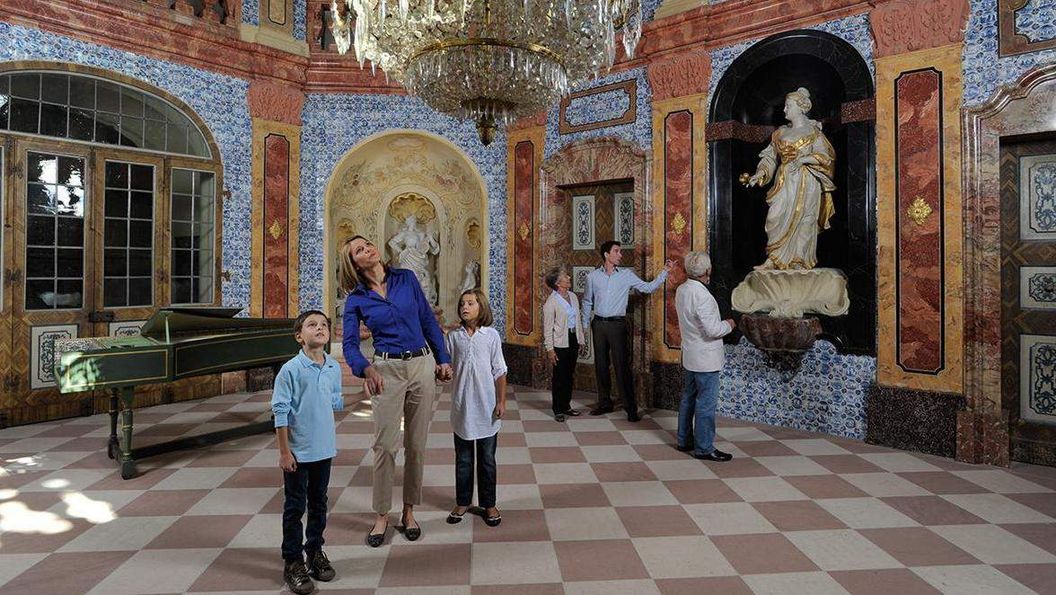A stylish extravaganza
No expense was spared on the palace interiors, which are replete with all forms of 18th century craftsmanship: colourful scagliola floors made from imitation marble, walls with faience tiles, ceilings adorned with plasterwork and frescoes, sumptuous embroidered tapestries and priceless furniture. As well as demonstrating Sibylla Augusta’s exquisite taste, this opulence served to portray her as a refined and cultured ruler. The jewel in the crown is the Florentiner Kabinett (Florentine room), which is still in its original condition and the only one of its kind in Europe. 758 panels cover the walls in a kaleidoscope of colour. Crafted from marble, granite and semiprecious stones, with breathtaking perfection, each panel is a work of art in its own right.






